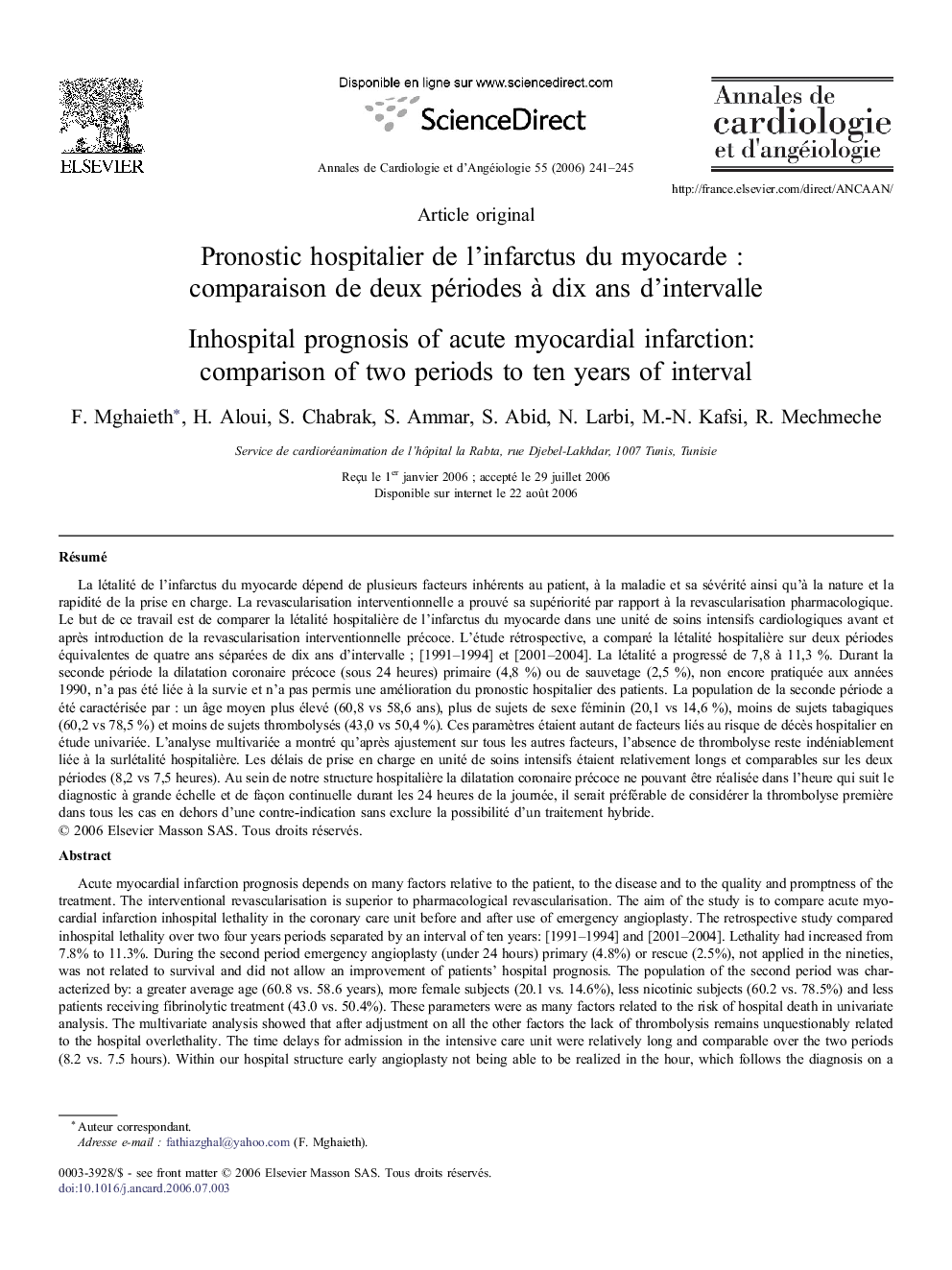| Article ID | Journal | Published Year | Pages | File Type |
|---|---|---|---|---|
| 2869693 | Annales de Cardiologie et d'Angéiologie | 2006 | 5 Pages |
Abstract
Acute myocardial infarction prognosis depends on many factors relative to the patient, to the disease and to the quality and promptness of the treatment. The interventional revascularisation is superior to pharmacological revascularisation. The aim of the study is to compare acute myocardial infarction inhospital lethality in the coronary care unit before and after use of emergency angioplasty. The retrospective study compared inhospital lethality over two four years periods separated by an interval of ten years: [1991-1994] and [2001-2004]. Lethality had increased from 7.8% to 11.3%. During the second period emergency angioplasty (under 24Â hours) primary (4.8%) or rescue (2.5%), not applied in the nineties, was not related to survival and did not allow an improvement of patients' hospital prognosis. The population of the second period was characterized by: a greater average age (60.8 vs. 58.6Â years), more female subjects (20.1 vs. 14.6%), less nicotinic subjects (60.2 vs. 78.5%) and less patients receiving fibrinolytic treatment (43.0 vs. 50.4%). These parameters were as many factors related to the risk of hospital death in univariate analysis. The multivariate analysis showed that after adjustment on all the other factors the lack of thrombolysis remains unquestionably related to the hospital overlethality. The time delays for admission in the intensive care unit were relatively long and comparable over the two periods (8.2 vs. 7.5Â hours). Within our hospital structure early angioplasty not being able to be realized in the hour, which follows the diagnosis on a large scale, and in a continual way, it would be preferable to always consider thrombolysis first in all cases apart from contraindications without excluding the possibility of a hybrid treatment.
Keywords
Related Topics
Health Sciences
Medicine and Dentistry
Cardiology and Cardiovascular Medicine
Authors
F. Mghaieth, H. Aloui, S. Chabrak, S. Ammar, S. Abid, N. Larbi, M.-N. Kafsi, R. Mechmeche,
